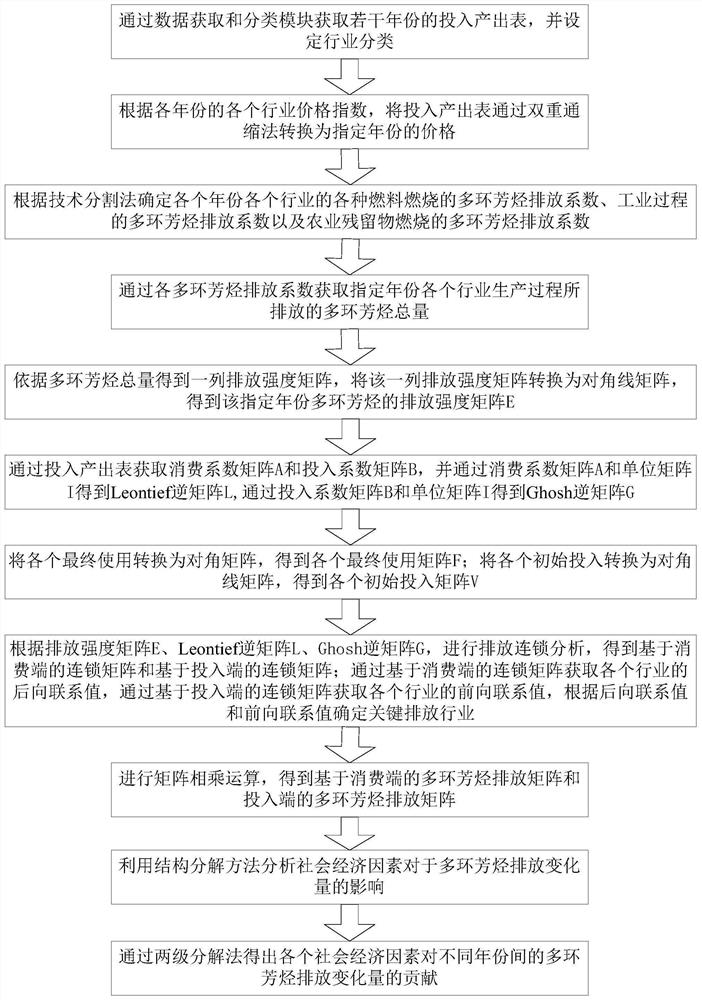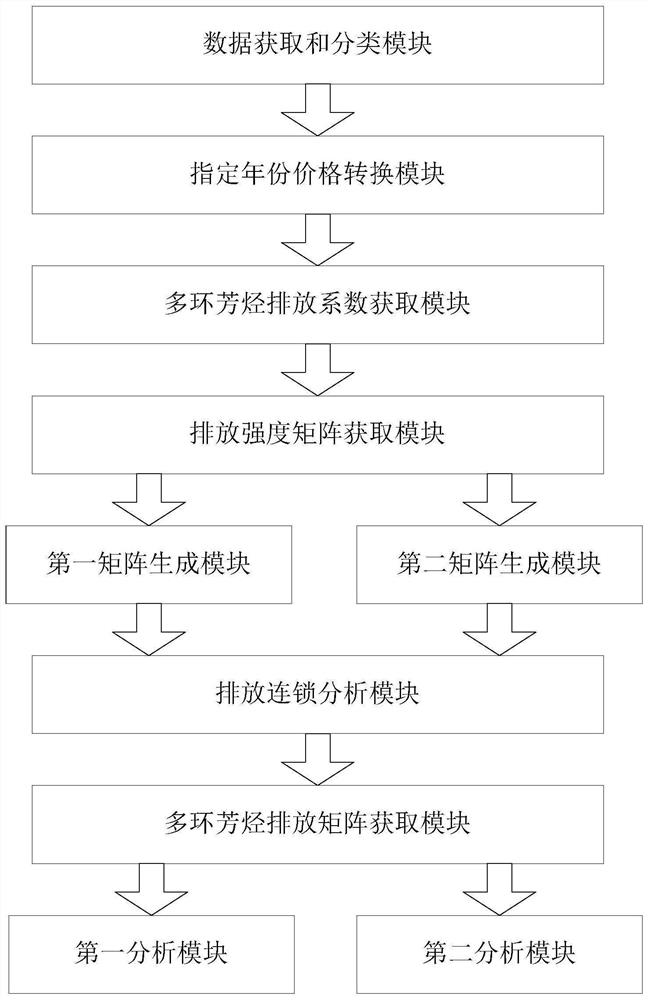Input-output analysis and structural decomposition method and system for polycyclic aromatic hydrocarbon emission
A technology of polycyclic aromatic hydrocarbons and emission coefficients, applied in the field of environmental economics research, can solve the problems of lack of structural decomposition methods for the variation of polycyclic aromatic hydrocarbons, lack of analysis methods for polycyclic aromatic hydrocarbons, and the impact of polycyclic aromatic hydrocarbon emissions to be clarified
- Summary
- Abstract
- Description
- Claims
- Application Information
AI Technical Summary
Problems solved by technology
Method used
Image
Examples
Embodiment
[0045] An input-output analysis and structural decomposition method for PAH emissions, such as figure 1 shown, including the following steps:
[0046] Obtain the input-output tables of several years through the data acquisition and classification module, and set the industry classification;
[0047] According to the price index of each industry in each year, the input-output table is converted into the price of the specified year through the double deflation method;
[0048] According to the technology segmentation method, determine the PAH emission coefficients of various fuel combustion, industrial process PAH emission coefficients and agricultural residue combustion PAH emission coefficients for each industry in each year;
[0049] Obtain the total amount of PAHs emitted by the production process of each industry in a specified year through the emission coefficient of each PAH;
[0050] According to the total amount of polycyclic aromatic hydrocarbons, a column of emissio...
PUM
 Login to View More
Login to View More Abstract
Description
Claims
Application Information
 Login to View More
Login to View More - R&D
- Intellectual Property
- Life Sciences
- Materials
- Tech Scout
- Unparalleled Data Quality
- Higher Quality Content
- 60% Fewer Hallucinations
Browse by: Latest US Patents, China's latest patents, Technical Efficacy Thesaurus, Application Domain, Technology Topic, Popular Technical Reports.
© 2025 PatSnap. All rights reserved.Legal|Privacy policy|Modern Slavery Act Transparency Statement|Sitemap|About US| Contact US: help@patsnap.com



